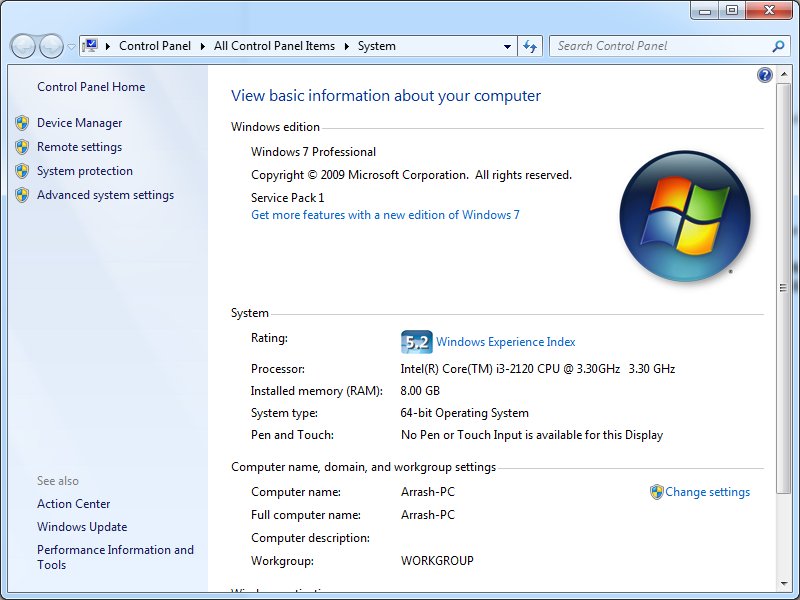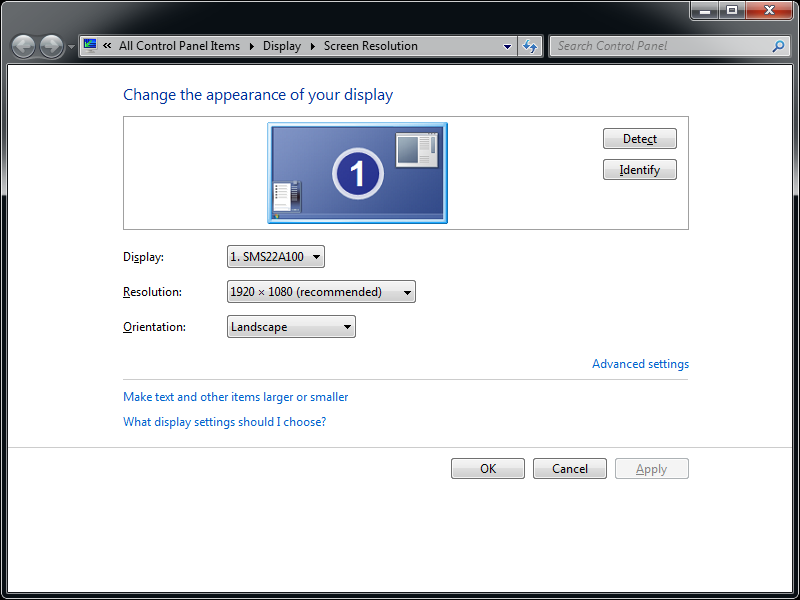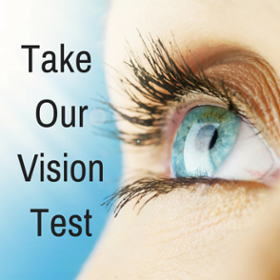NovaVision developed Vision Restoration Therapy to help stroke and brain injury patients regain their vision, mobility, confidence, and quality of life. Learn the answers to frequently asked questions about the basics of vision rehabilitation, including how long the therapy takes, how it works, and more.
General
How Do I Know If I Have A Visual Field Loss?
How Do I Know If I Have A Visual Field Loss?
NovaVision has developed a free vision test designed to help people determine if they have experienced neurological vision loss after a stroke or brain injury which can be performed online with instant preliminary results. While simpler than a diagnostic test available from physicians and hospitals, this vision test includes key elements of tests that might be used by a physician. We hope the results of your test can help you discuss your vision concerns with your physician. To properly determine the presence of a visual defect, the results of this free vision test should be combined with a complete vision evaluation with a medical professional
What is Vision Restoration Therapy?
What is Vision Restoration Therapy?
VRT is a restoration therapy designed to improve visual sensitivity in the previously blind zones by using light to stimulate the border between the “seeing” and “blind” visual fields. While speech, physical and occupational therapies are the long-standing treatment standards for stroke and brain injury survivors, NovaVision VRT is the only FDA cleared therapy available today to restore vision loss due to stroke or brain damage and is supported by 20 clinical studies and decades of research. VRT is available in the US and the EU and selected locations internationally in both English and German language versions.
Visual field loss prevents patients from engaging in many normal day-to-day activities such as reading, dining out, walking without bumping into things, and driving. In a retrospective study, more than 70 percent of patients who completed VRT showed measurable improvements in their vision that enhanced their quality of life.¹
1 Romano JG, et al, Visual field changes after a rehabilitation intervention: Vision Restoration therapy, J Neurol Sci (2008), doi:10.1016/j.jns.2008.06.026
Does vision rehabilitation have any age limitations?
Does vision rehabilitation have any age limitations?
Although there are no age limits for the therapy, VRT is not recommended for children, due to the requirement to be able to concentrate for two sessions of 15-25 minutes a day, six days a week.
Does the amount of time since an injury affect whether a patient qualifies for VRT?
Does the amount of time since an injury affect whether a patient qualifies for VRT?
The time between the injury and beginning therapy does not affect efficacy. There have been many successful outcomes for patients who suffered vision loss decades before receiving the therapy.
Can myopia or farsightedness be treated with Vision Restoration Therapy?
Can myopia or farsightedness be treated with Vision Restoration Therapy?
VRT is indicated only to treat visual impairments caused by neurological disorders such as strokes, head injuries, and brain tumors. Refractive errors like myopia, hyperopia, astigmatism, or presbyopia are not treated with VRT.
Who is eligible for Vision Restoration Therapy?
Who is eligible for Vision Restoration Therapy?
Most patients with visual field defects as a result of neurological trauma, who have some residual vision and no physical damage to the eye, are eligible for VRT and may benefit from the treatment. However, there are certain conditions in which VRT may not be suitable or which may interfere with the effectiveness of VRT:
- Patients with a history of seizure disorders, especially those who are photosensitive, must NOT undergo NovaVision VRT until they have consulted with their health care professional. In patients with uncontrolled photosensitive seizure disorders, visual stimulation may have adverse effects including, but not limited to, seizures.
- Those with significant cognitive deficits.
- We recommend that patients suffering from acute inflammation of the eyes or central nervous system delay therapy until the acute phase is over.
Patients need to have the ability to sit upright and concentrate on a task without distraction for 15-30 minutes, should be motivated towards rehabilitation and able to commit to approximately an hour a day of therapy, six days a week. Because the treatment requires patients to be seated for extended periods, patients who have been previously diagnosed with deep vein thrombosis (DVT), or who may have an increased risk of experiencing DVT, should consult with their physician before initiating the VRT therapy program.
For full details of the patient requirements, contraindications, warnings, and precautions, please view the Patient Requirements section.
What vision defects can be treated with Vision Restoration Therapy?
What vision defects can be treated with Vision Restoration Therapy?
NovaVision Vision Restoration Therapy is intended for the diagnosis and improvement of visual functions in patients with impaired vision that may result from trauma, stroke, inflammation, surgical removal of brain tumor(s) or brain surgery.
Vision Restoration Therapy can treat any of the following vision defects:
- Hemianopia (decreased or lost vision in one-half of the visual field)
- Quadrantanopia (decreased or lost vision in one-quarter of the visual field)
- Scotoma (island of visual impairment)
- Diffuse field defect, including constriction of the field of vision (tunnel vision) caused by a tumor, brain surgery, or brain disorders
Benefits & Risks
What is the success rate of VRT?
What is the success rate of VRT?
A retrospective study of 161 patients from 16 medical centers across the US demonstrated that 76% of patients who completed this type of vision rehabilitation showed measurable improvements in their vision fields¹. Other studies have produced similar results. As with all therapies individual results vary, and there is no way to predict how you will respond to VRT.
¹ Romano JG, et al, Visual field changes after a rehabilitation intervention: Vision Restoration therapy, J Neurol Sci (2008), doi:10.1016/j.jns.2008.06.026 (NovaVision sponsored study)
Does Vision Restoration Therapy have any side effects?
Does Vision Restoration Therapy have any side effects?
In common with all activities requiring extended use of a computer screen, NovaVision VRT may cause light headaches or fatigue if performed too intensively or without sufficient relaxation periods (breaks). If this occurs, patients should take more frequent breaks during the session or request shortened therapy times. If this persists, patients should temporarily discontinue the therapy until symptoms subside and notify their healthcare professional.
What are some of the improvements patients have described after undergoing vision rehabilitation?
What are some of the improvements patients have described after undergoing vision rehabilitation?
Most of the improvements patients describe after undergoing vision rehabilitation involve reading, walking / mobility, confidence / independence, hobbies, watching TV, and dining out. Patients also report a decrease in injuries from falls and bumps. For more information, and to hear about results from a patient perspective, please read, watch and listen to NovaVision VRT patient stories.
How much vision can I expect to regain?
How much vision can I expect to regain?
Clinical data has shown that the average vision gain from VRT vision rehabilitation is an approximate five degree shift in the border of the blind field, which can have an exponential impact on a patient’s daily life.¹ A 5 degree shift in the border of the blind field often leads to better reading, better mobility, less collisions, among other effects. For the majority of patients, the improvement is not sufficient to return to driving, however, some patients have achieved this goal.
¹ Romano JG, et al, Visual field changes after a rehabilitation intervention: Vision Restoration therapy, J Neurol Sci (2008), doi:10.1016/j.jns.2008.06.026 (NovaVision sponsored study)
Process
How do I start my therapy?
How do I start my therapy?
The first step is to check whether you would meet the eligibility requirements for the therapy and then call NovaVision Patient Services or register online. During the registration process, NovaVision will verify your candidacy and if needed help you to locate a physician who can prescribe VRT for you. Once your registration is complete and you have made payment, NovaVision will send you a chinrest and activate your therapy license. Once you have received the chinrest you will be able to download and install the therapy on your computer. Guides will be provided to help you download, set up and start your therapy. You will then complete a series of tests to evaluate your vision deficit. NovaVision then analyzes the test results to create and send you a customized therapy program. You may contact NovaVision by email or call us at 1.888.205.0800 to ask questions or request more information.
During my therapy when should I see my doctor?
During my therapy when should I see my doctor?
NovaVision will continually monitor your deficit and your progress. If you wish, your physician can receive your progress reports and it is up to you and your doctor if you need to meet during or at the end of your therapy, although this is not required by NovaVision.
How is my therapy program determined?
How is my therapy program determined?
Once it is determined that you are a candidate for Vision Restoration Therapy you will take several tests that will map your area of visual impairment. From these initial tests NovaVision will determine the location of the borders of the visual deficit, and how to target them with therapy. Your therapy regimen will be updated regularly based on your progress and the status of your deficit.
Is Vision Restoration Therapy covered by insurance?
Is Vision Restoration Therapy covered by insurance?
VRT is not generally covered by health insurance or Medicare/Medicaid. With proper documentation, however, in certain circumstances a small number of NovaVision’s patients have had success gaining insurance coverage for the therapy. This may take persistence and result in delays to you commencing treatment. If you wish to submit a claim or an appeal, please contact NovaVision at 1.888.205.0800 who can assist you.
How much does the therapy cost?
How much does the therapy cost?
NovaVision provides VRT in a therapy suite with NeuroEyeCoach at a total cost of $900. This provides six months therapy for VRT and the complete 36 sessions of NeuroEyeCoach. NovaVision will send you a chinrest for which we require a $50 deposit in the US ($155 chinrest purchase price for outside the US), refunded when you return the chinrest at the end of your therapy. All Mainland USA mailing costs are covered by NovaVision.
How long does Vision Restoration Therapy take to complete?
How long does Vision Restoration Therapy take to complete?
Generally it is recommended that patients complete 6 months of twice-daily therapy, six days a week, however, everyone responds differently to therapy. After the initial 6 months of therapy the patient should be re-evaluated by their doctor or NovaVision to determine if it will be beneficial to continue therapy.
How do I perform the therapy?
How do I perform the therapy?
Vision Restoration Therapy is performed on your computer in the comfort of your home. During a 30-minute session, you will focus on a central point on the device screen and respond whenever you see a light stimulus appear or when the fixation point changes in shape and color. It is recommended to set up your computer and the provided chinrest on a desk or table with a comfortable chair in a quiet, dimly lit room, free of distractions. NovaVision Patient Services is available to help you get started should you need assistance and can be reached by calling 1.888.205.0800. You will also be provided with detailed setup instructions.
Questions About NovaVision VRT and NeuroEyeCoach
I don’t understand the difference between NovaVision VRT and NeuroEyeCoach.
I don’t understand the difference between NovaVision VRT and NeuroEyeCoach
These therapies follow two different approaches to dealing with visual field deficits resulting from neurological brain damage:
Restoration: aims at improving visual sensitivity within the blind area by repeated stimulation, allowing patients to detect objects within the blind field. Examples of this type of therapy include NovaVision’s Vision Restoration Therapy (VRT).
Compensation: patients learn to direct their gaze towards the affected area bringing previously unseen objects into sight thereby allowing the patient to make the most of their remaining vision. NeuroEyeCoach is an example of this type of therapy.
If I am considering which therapy to perform first – what is the Company’s recommendation?
If I am considering which therapy to perform first – what is the Company’s recommendation?
The sequencing of the two therapies is entirely a matter of personal preference and the Company does not make a recommendation. NeuroEyeCoach is supported by several decades of scientific research, which shows that by training you to make effective eye movements you quickly become able to better cope with your daily tasks. NeuroEyeCoach can typically be completed in 2–4 weeks with benefits being experienced within this time frame. NovaVision VRT is a restoration therapy, where some lost vision is regained, and typically it will be approximately three months before you start to experience a tangible benefit from the therapy’s routine.
You are not able to perform both therapies at the same time so must have completed the initial therapy before moving onto the other therapy.
Does it matter how often I do the therapy, as I was planning on going on holiday in a couple of weeks?
Does it matter how often I do the therapy, as I was planning on going on holiday in a couple of weeks?
The frequency of your therapy sessions is important in order to maximize the benefits you will derive from it. It is therefore recommended that you perform the therapy twice a day, six days a week. You should also try not to have a long break during the therapy period; if you are planning a vacation or trip during which you will not have access to a computer that meets the technical requirements or not be able to perform the therapy on a regular basis, it is recommended that you commence the therapy on your return.
Questions About Technical Requirements
What technical requirements are there – what do I need to have to perform the therapy?
What technical requirements are there – what do I need to have to perform the therapy?
- Internet connection
- PC (desktop or laptop) with Windows 7 or later. NovaVision VRT is not compatible with Apple OS, however can be used with an Apple computer if Windows or a program such as Parallels (parallels.com) is installed.
- Screen size of 15” (diagonal) or greater is required and the NovaVision therapies will not operate below a minimum screen resolution of 1024(W) x 768(H).
- Some familiarity with computer operation and Internet browsing. VRT requires an initial download and run of an Installation program from the NovaVision website portal. Your progress reports are also downloaded from the same portal.
Please note that, prior to registration, the NovaVision portal will run a check on the technical attributes of the computer equipment being used to access the portal and will inform you if the technical requirements are not met.
All technical requirements are also stated on the website for your review.
Can I perform the therapy on two different computers, for example, my desktop and my laptop?
Can I perform the therapy on two different computers, for example, my desktop and my laptop?
As long as both computers meet the technical requirements you can perform the therapy on both; your position in the therapy program will be synchronized each time you log on and will always start at the correct position on whichever device is used. However, each time you change from one computer to the other you will need to re-calibrate to ensure you are the correct viewing distance from the screen; this is an easy process that is explained in the QuickStart Guide.
How can I see what type of operating software I am currently running?
Click on your Start Menu and right click on Computer/My Computer and select Properties.
The window displayed below will open and your Operating System information will be visible under Windows Edition.

How can I determine my screen resolution?
How can I determine my screen resolution?
Right click on your desktop and select Display Options/Screen Resolution which will reveal the window below.

I like to set my screen resolution lower so that the fonts on my screen appear larger, can I do that with VRT?
I like to set my screen resolution lower so that the fonts on my screen appear larger, can I do that with VRT?
As long as the screen resolution is not set to lower than the minimum resolution stated above, VRT will be able to operate. If you prefer to set your resolution lower than the minimum requirement, you will need to adjust it before each therapy session using the same Screen Resolution window pictured above. If you forget, a warning will appear requesting you to adjust your resolution.
Why are you not supporting service Windows XP or Vista?
Why are you not supporting service Windows XP or Vista?
Windows XP Service Pack 2 is no longer supported by Microsoft and is not compatible with the technical framework and pre-requisites required for the NovaVision therapies. Microsoft also no longer supports Windows XP Service Pack 3 and will shortly be ending its support for Windows Vista. Although the NovaVision therapies were originally designed to be compatible with Windows XP SP3 and Windows Vista, we cannot guarantee compatibility and therefore do not support these operating systems.
I have an Apple computer, can I run VRT?
VRT will not run on an Apple operating system. However, Windows can be installed on all modern Apple computers and there are also programs such as Parallels (www.parallels.com) which enable Windows-based programs to be run on Apple computers. VRT cannot be used with an iPad although you will be able to access the Portal and review your progress and reports on an iPad if you wish.

